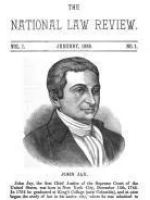The 2015 Legal Marketing Association’s (LMA) Pre-Conference workshop, Breakthroughs in PR, Content and Communications, was jam packed with useful practice tips. It ended with a panel featuring various professionals who are prominent in legal media, who provided various perspectives on the future of legal media coverage.
Moderators Cheryl Bame of Bame Public Relations, and Joshua Peck of Duane Morris LLP guided panelists--Vanessa Blum of The Recorder, Amy Stevens of Thomson Reuters, and Casey Sullivan of Bloomberg BNA--through a series of Q&As to help marketers in the audience understand what members of the media are looking for in their legal news coverage. Although they come from different publications, panelists were often unified in their answers and expectations regarding their work with law firm communications professionals.
After a brief introduction about each of the panelists’ backgrounds, moderators began with putting the panelists in the audience perspective and finding out what they would do if they were named the Communications Director at a firm. All agreed that the first task would be to get to know as much as possible about the law firm until, as Mr. Sullivan expressed, they are able to sufficiently explain the firm’s practice to others. Ms. Blum and Ms. Stevens said they would put to use their backgrounds as journalists and get to know people at the firm by interviewing them.
Ms. Blum also added that it’s important to understand which journalists the firm wants to connect with and why. This is an important lesson: know your audience. You can then tailor your pitch to make it most appealing to the member of the media evaluating your story. For Ms. Stevens, a pitch that is not distinctive or personalized for her indicates the PR person lacks an understanding of what the publication does and is often a quick way to have your pitch rejected.
Panelists’ also offered what makes for a good PR professional. For Mr. Sullivan, he finds that the constant requests to approve quotes would make him less likely to use that source in the future. This speaks to the level of trust that the PR professional has in the reporter to be able to stick to what’s on the record, which can be off putting to some. Ms. Blum likes working with people who are interested in building relationships, not necessarily people who are seeking to conduct a transaction with her newsroom. She finds that if both parties view the process as investing in a relationship, that it’s more rewarding and productive.
Ms. Stevens values a PR person who can be creative and flexible in their thinking when it comes to abiding by the law firm’s rules. For example, one firm’s policy is to not mention other law firm names in their press releases. The pitch itself is a press release discussing new hires at a law firm, but does not mention where these newly hired attorneys were hired from. To Ms. Stevens, a good PR person would put an editorial note--not part of the pitch--to help inform the reporter what firm or organization the attorneys previously came from. Finding a way to not violate firm policy, but to also help reporters in their process, demonstrates creativity to work through a problem where everyone wins.
At the end of the session, the panel discussed several different sample pitches and why each panelist would choose to pick up the story or decline to. Scenarios included rumored sexual harassment scandals at law firms, press releases of large verdicts, hiring a new female firm partner. Here are the key takeaways from the panelists’ responses:
-
Trusting the source of the information - Just because someone comes to them with a newsworthy story, panelists would not accept the pitch readily without additional information. Panelists would be skeptical of only a single source and no documentation to support the evidence of the actual story. In the example pitch, the story discussed an accused serial sexual harasser at a law firm who had left the law firm. There is no public record of the sexual harassment, but according to the single source, everyone at the law firm knew what happened. Depending on what actual claims were made by the source, Mr. Sullivan would decide whether other sources would be difficult to identify and whether he would go forward with investigating the story. If so, he would call the law firm. Ms. Stevens stated that as pitched, the story does not meet the threshold for stories worthy of investing resources to further investigate. As marketers, it is important to present members of the media with reliable sources and documentation for your story.
-
Be more than just a press release - Panelists were very clear in their distinction between what is news and what is PR. The operative difference between the two being whether the story matters in a larger context. One sample pitch included a story of a boutique firm winning the largest verdict for a small firm in their state, and who then continued to be hired by major energy clients as a result. All panelists agreed that they would not pick up this story. These types of verdicts happen everyday all across the country, while that’s nice for the firm, is not newsworthy. When the moderator added the extra detail that because of this verdict, energy clients are leaving many large firms to work with the boutique firm, panelists saw different value in this story. This is newsworthy because the large migration of energy companies from large law firms to small firms is potentially a reflection of a broader trend in energy legal services. A potential story that comes out of this pitch could be the shift in what energy companies are looking for in representation, rather than simply promoting a major victory of a single law firm. The added dimension of a potential emerging trend took the story from PR to news. A marketer must examine how her firm’s news impacts the legal world in a larger context.
-
Tell them a good story - Members of the media are pitched countless stories. What sets some stories apart, besides the ones that are obviously newsworthy, is good storytelling. Panelists admitted that there is a certain repetitiveness to many of the pitches. If your story is a good one, but sounds like many other law firms’ stories, then be creative in the way you distinguish yourself. Another sample pitch involved a small firm who has done a multitude of corporate deals that when added together, rival the total value of their rival large firms. The panelists agreed, that as presented, the story is the same as a press release. There is no depth to that particular information. The stories about the larger firms with the single larger corporate deal might be deemed newsworthy simply because of the size of the deal. Large corporate deals affect stock values and have broader implications for the economy, which is why they would be more noteworthy than a series of smaller corporate deals adding up to the same amount. But likely, the small firm does have a story to tell that may not be readily apparent by simply stating the firm has had many corporate deals. As marketers, distinguishing how what the firm is doing is different from what everyone else is doing can be the key point to being recognized as newsworthy. Panelists challenged the audience to find what’s compelling about the firm’s news that will set them apart and make for a great story.




 />i
/>i
